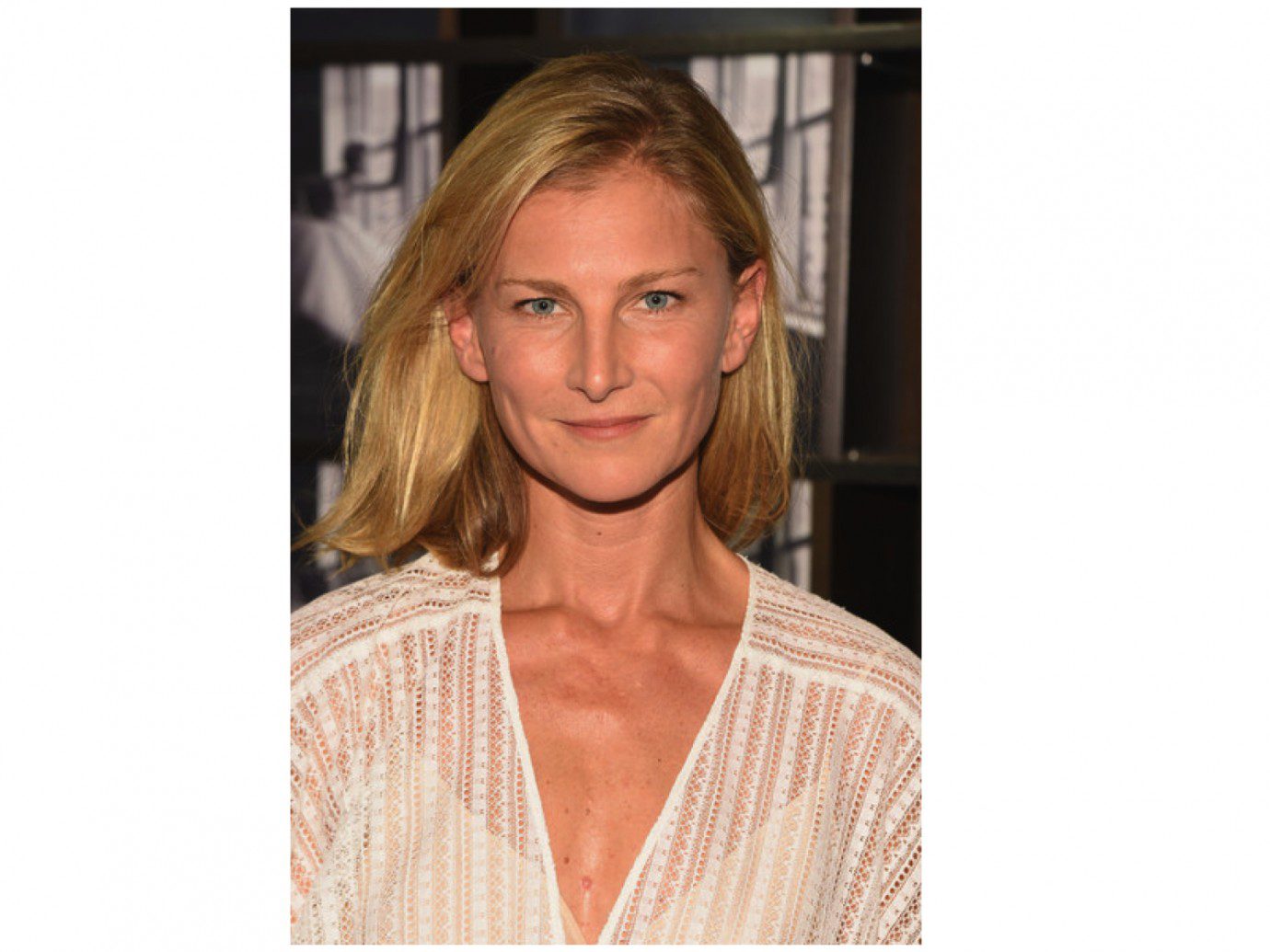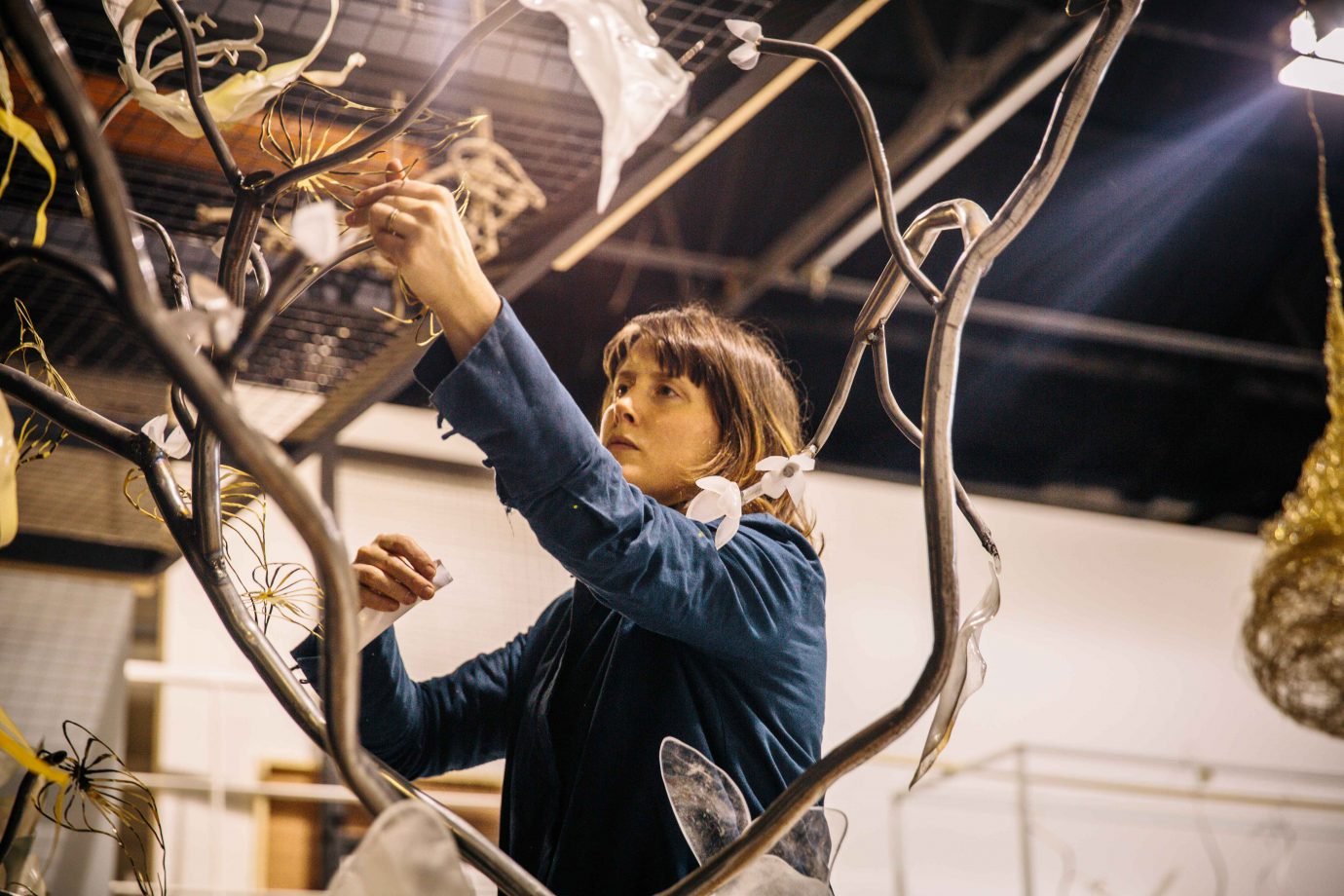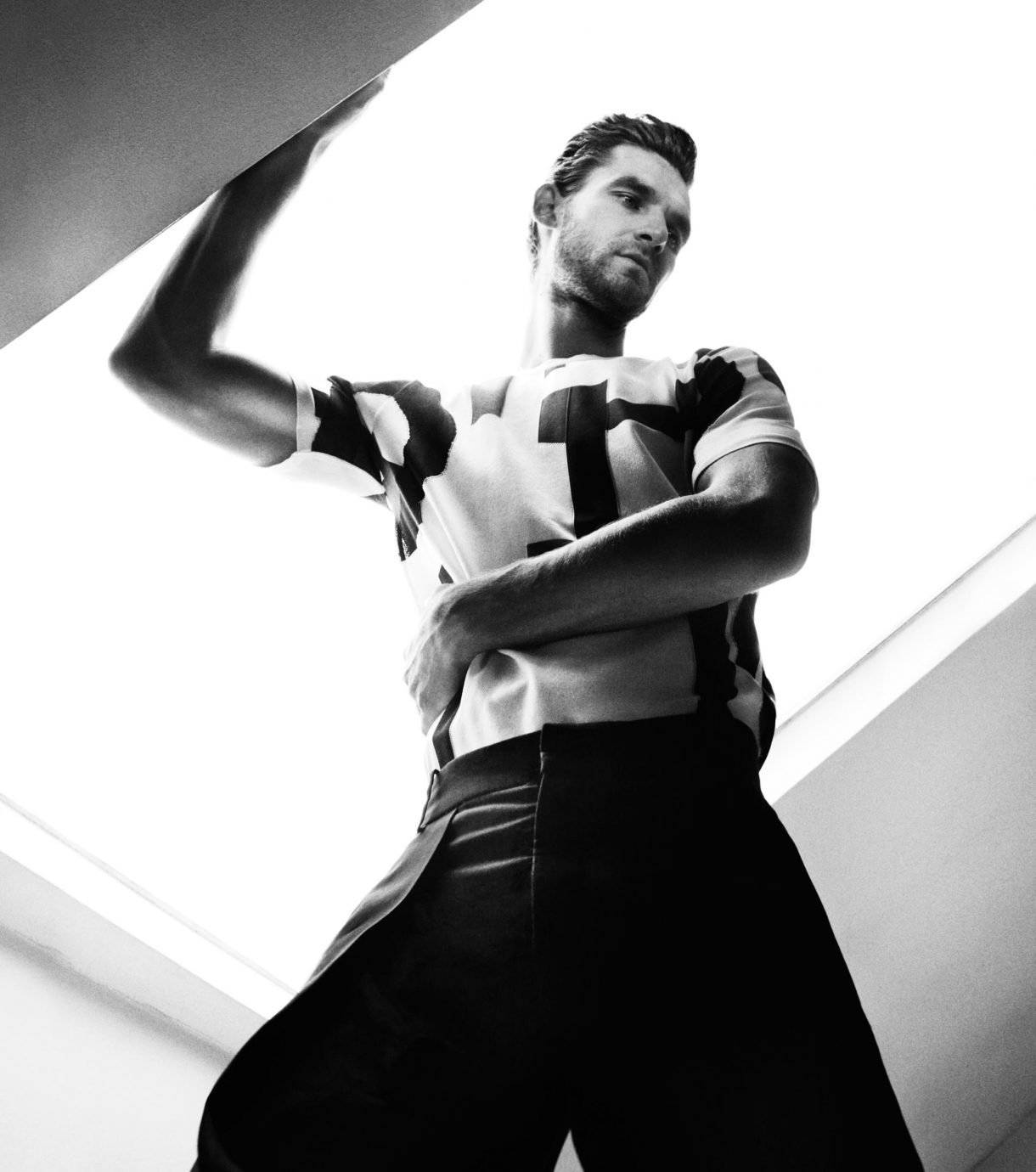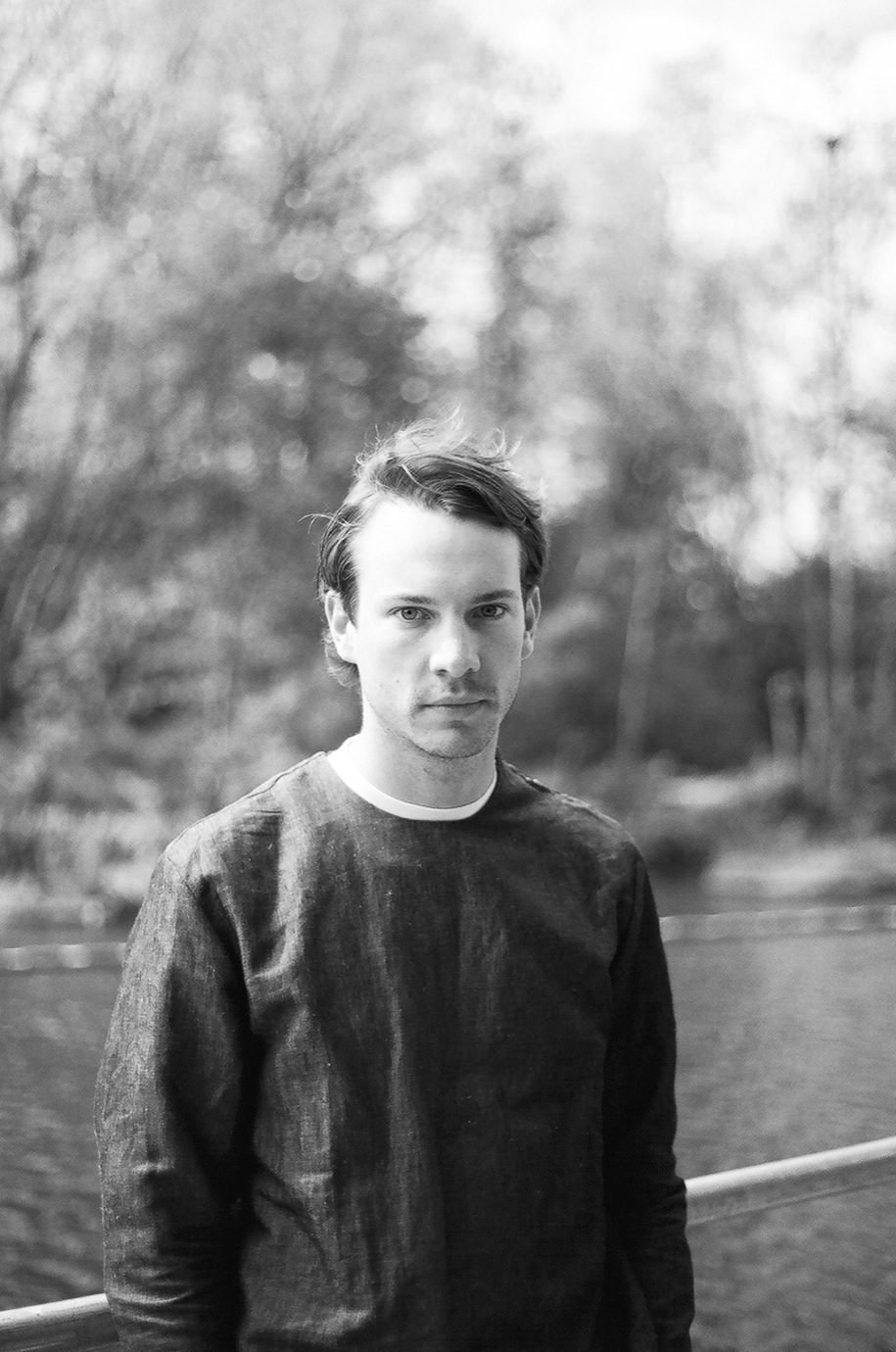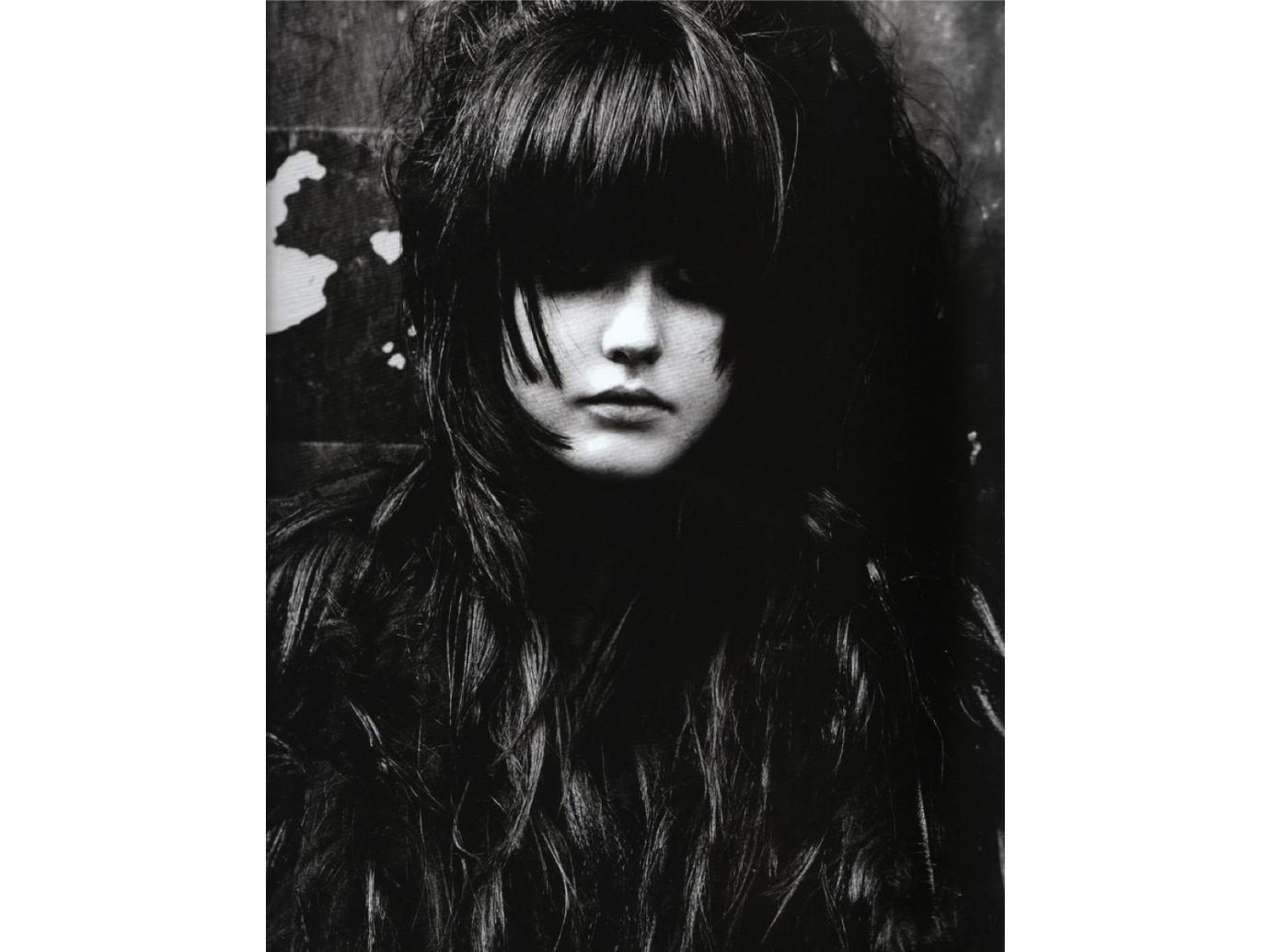In an industry that changes so rapidly every year, how does System stay relevant?
When we started the magazine, there was a sense of wanting to have access to the people around us in the industry – those who have been ordained as the kings and the queens. Very quickly, we could draw up a list of the people that we were really interested in conducting long-form interviews with; trying to speak with them several times so you become a familiar annoyance to them. Trying to decipher what makes them who they are and how they’ve forged a singular identity within an industry that’s crowded and competitive.
It was quite easy to go: “We’d love to do x, y and z.” That list was not directly related to commercial success. We were keen, for example, to interview Rei Kawakubo and, as you know, while her business is self-contained and healthy, it’s a fraction of the bigger houses. Obviously, when you start making a magazine you don’t think about what the pitfalls or shortcomings will be in eight years time. You can only think maybe three issues in advance. So quite quickly, you start thinking: “Well, we’ve done that designer, we’ve done that one, how many more are there left to do?” You start to think about a new guard of people in the industry, which also requires a new interviewing approach. How would you interview someone who is emerging as opposed to someone who’s been established for 20 years? It’s an inherently different task.
I think the key moment for System was handed to us on a plate when we put Virgil Abloh on the cover. It was the first time we put somebody on who had not been widely ‘ordained’ by the industry. On the contrary, he was actually quite a divisive figure at the time – some people in the industry were quite dismissive of his repertoire of fashion design skills – certainly before he went to Louis Vuitton. But at System, I remember we were all struck by what an incredibly charismatic person he was. It’s been said so often, but he really was a positive force.
How did that story happen?
I actually think Virgil reached out to us. That in itself is very telling: a designer just contacting a magazine directly to say, “Look, I really love what you’re doing, I’d love to be featured.” We had an internal discussion about whether we would put him on the cover, and what that would say to our predominantly industry readership. Out of that discussion came the title: “What is Virgil Abloh?” Not who is Virgil, but what? What is the standpoint? As part of the editorial story we asked that question to a lot of people in the industry – “What is Virgil Abloh?” It was fascinating reading people’s responses, and how the shift in opinion was happening almost in real time. I think that’s when we realised editorially: it’s no longer about who is preordained, but about what is relevant. Once you free yourself of that, you suddenly go: “We could go on for another 150 years, because what’s relevant is relevant.”
So, in answer to your question about what keeps System relevant, it’s simply to operate as a vessel, with a very clear and orderly framework, in which to receive more or less anything. To simply reflect the conversations and the feelings about what’s going on in the industry at any given time. Of course, you need some sense of instinct and intuition about forecasting these things, which probably comes from experience. It’s almost inescapable that we should do x, y and z person at any given time, but we also don’t want to do something that feels expected. Because no one wants that, right? As Nicolas Ghesquière told me, “Doing things at the right moment is the essence of fashion. Early enough to surprise, but not too early that people only see the idea as an anecdote.”
“All media today – from a newspaper to a magazine to an Instagram account or TikTok clip – is defined by its relationship with time.” – Jonathan Wingfield
Certain interviews feel so obvious that nobody ends up doing them. Like that interview with Nicolas Ghesquière: nobody else had done that.
That was a very particular set of circumstances. I’d love to take credit that we sort of foresaw that, but it was more a case of serendipity. He was arguably the most-respected designer of the time who, in late 2012, found himself in-between houses and with time on his hands. He’d had 15 intense and very successful years at Balenciaga, and he had a lot of things he wanted to say about that experience. It was great timing for us – it was our launch issue – even though the idea of doing longform interviews with designers was something I’d been harbouring in my mind for a while.
Back when I was at Numéro magazine, we’d wanted to do something with David Lynch. I asked him who he wanted to be interviewed by, and he said, “A writer in Los Angeles called Kristine McKenna, she interviews me a lot and she asks really interesting questions.” So Kristine did a great interview with him, and I kept in contact with her. One of her writing gigs at the time was doing the Playboy ‘interview of the month’ – this would’ve been in the early 2000s when Playboy still had a pretty significant print readership in America. Since its heyday in the 1960s and 70s, there was always one person – usually a man – who was interviewed for the issue, everyone from Henry Kissinger to Martin Luther King Jr, Muhammad Ali, Fellini, Truman Capote, John Lennon; quite lengthy and often definitive interviews that covered political and cultural figures. She explained to me that because the Playboy brand was still so powerful, they were able to stipulate that the subject had to be interviewed by the journalist about four times. So the first time is like, “Hi, my name is Kristine, you don’t know me, I’m going to sit down and interview you.” Second time, “It’s me again.” Third time, “Hey, it’s you again.” By the fourth time, you’ve established a good rapport. She sent me the interview that she’d just done with the Coen Brothers. Playboy had published four pages, but she sent me the full 80-page transcript. It was a slow-burning conversation, unbelievably insightful, and for the most part, unpublished.
This was around the time I was really starting to get bored of celebrity culture taking over the journalistic process. Not that I’m not into celebrity, but unless you are a very powerful media platform, your access is going to be cripplingly limited. I remember when I started at Numéro, one of the first things I did was go to the Cannes Film Festival to interview Sofia Coppola about The Virgin Suicides. I loved that film, in particular the way she was taking photographic references that I was really into at the time, people like Eggleston and Bill Owens, and turning that aesthetic and mood into a narrative. I had an hour and a half interview, and I thought it was a great privilege to sit down and have a pretty meaningful conversation with her. I interviewed her a couple of years later when she did Lost In Translation, but it was only half an hour in a hotel room, with a publicist present. By the time I went back to Cannes, probably around 2012, to interview her again, there were three or four publicists and agents in the room. As I was about to begin, one of them said: “Hey, you’ve got 11 minutes.” Soon after, they said, “Nine minutes left… eight minutes left.” I just remember thinking: “This is a waste of my time, it’s a waste of Sofia Coppola’s time, and it’ll be a waste of time for anyone who’s going to be reading this.” It was a deeply dissatisfying experience.
I kept on thinking about Kristine’s four-part interviews, and how that could be applied to the fashion media. Just thinking to myself: “What if we operated in the same way, where we request repeat interviews with fashion’s leading designers?” Not because you want to ask them questions for eight hours, but because you’re checking in with someone over a period of time – a six-month fashion season. What designers now produce within that time gives you an incredible first-person insight into how the industry has changed. And with that comes other interesting elements to explore: the pressure on the designers, the ambition, the machines around them. You can draw from that everything you want about society, the fashion industry, consumerism, the environment. With Nicolas Ghesquière, it was just a very lucky time for us: there was an appetite to hear him speak, and there was a period when he had the time to be interviewed each month for a few months.
Actually, when I did Paradis magazine with Thomas [Lenthal], we were able to do that too. We had Hans Ulrich Obrist interview Damien Hirst multiple times over the space of an entire year. You start with the best intentions of producing a magazine every six months, and then you end up putting an issue out every year because Damien Hirst hasn’t stopped talking… [laughs] But rather than it being a topic of shame, you have to luxuriate in that and use it as a point of distinction. All media today – from a newspaper to a magazine to an Instagram account or TikTok clip – is defined by its relationship with time.
It’s that thing of needing to be present; documenting and reacting to something in real time. During Paris Fashion Week, I see people posting 24 hours after a show, and I’m now thinking: “That bus left, you’ve got to do it instantaneously!” So for something like System, which in its magazine format is so utterly divorced from that immediacy, it’s about accentuating the luxury of time through analysis and context. Conceptually, System still works well seasonally because the fashion industry still more or less operates within a seasonal time frame. I’d say that a magazine like System or 1 Granary has to operate more like a time capsule. Social media is a snapshot of the moment, and then it’s gone. But if you look at the issue we did in, say, the summer of 2015, there’ll be elements which will, whether we planned it or not, represent a time capsule of what was going on at the time. That’s really important.
“There are very few other places where you’ll likely see up-close a mainstream pop star sat next to an avant-garde architect, a world class football player, a politician, and the richest man in the world – like a sort of kebab skewer of power and influence.” – Jonathan Wingfield
It seems to us that you have a lot of insight into the industry. We find that often journalists don’t know how things really work, like they write about showrooms but have never set foot in one.
If you’ve been operating in an industry for a number of years, the reality is that you will get insight into a lot of different roles and operational elements; you’ll probably have some first-hand experience of the working nuances, the behavioural patterns, the idiosyncrasies. When I worked at Numéro, I was very conscious of the fact I had a very superficial knowledge of a pretty wide range of different disciplines and milieu. For instance, I think I had accrued a decent understanding of what makes famous architects tick, having spoken to many of the well-known ones about what drives them, and of their own sense of legacy. But sit me next to an architect at a dinner party who wants to talk cantilevers or cupolas and I’m completely out of my depth. The same goes for filmmakers, choreographers, and many other domains. So when we started System, the idea was to investigate one single industry that we all knew in a more in-depth way, rather than a superficial exploration of many different industries. Ironically, what’s happened over the last ten years is that fashion is now deeply ingrained in so many peripheral worlds, whether it’s music, sports, art, Hollywood. It’s impossible to have an in-depth knowledge of fashion without understanding other domains because that is part of your job.
What I love about fashion as a world to think about and editorialise, is that it encompasses so many different facets of the contemporary world and the human condition, whether that’s commerce, creative instinct, marketing, humanity, consumerism, identity, desire, ambition, bitchiness, gossip, self-doubt. And because of its ongoing rhythm of seasonal change, fashion propels itself in a way that forces it to remain relevant and a reflection of the moment. When you look at the front row of a fashion show, and you observe the cross section of guests: that’s a pretty extraordinary snapshot of the time. There are very few other places where you’ll likely see up-close a mainstream pop star sat next to an avant-garde architect, a world class football player, a politician, and the richest man in the world – like a sort of kebab skewer of power and influence. It really sums up and represents fashion’s all-encompassing desirability, with its tentacles in so many different worlds. It’s just a fascinating place of observation. Some people are appalled by the chaos in front of a big fashion show today, but fashion is an extraordinary mirror reflecting society, for better or worse.
Do you feel out of place when you go to fashion shows?
I rarely attend shows these days, unless I’m writing a story about a brand or designer. Do I feel out of place at shows? To be honest, I think there are very few people who think, “It was my God-given destiny to be on the front row.” There are so many people in the industry who I’ve come across – including some of the highest-profile designers and CEOs – who had no intention of working in fashion, who stumbled into it through a chance encounter or opportunity, or just by mistake. But, again, that also reflects the explosion of the industry’s scale and why so many people are now working in it; how it absorbs whole activities and professional fields; really talented people who, 25-30 years ago, would have gone to work in completely different fields.
It’s interesting how the excitement around working in fashion has also changed. Often younger people have a more transactional approach now.
I remember asking Cathy Horyn: “What do you know now about fashion that you didn’t before you entered the industry?” She responded, in a whisper, “Just how much money there is sloshing around the industry.” I think her answer nicely mirrored the times. The sheer scale of the industry defines so much now.
“It seems odd to judge a Martine Rose collection in the same way as you would assess an Armani show. Armani should be critiqued, observed, championed, and praised based on the reality of what Armani is, not in comparison to a completely different brand.” – Jonathan Wingfield
There’s so much money, yet people don’t really know about it. For example, the main narrative around designers who work for brands is that they’re underpaid, but in senior positions within luxury brands many receive 150k+ salaries.
What became increasingly clear when we worked on the latest issue of System – its 10th anniversary, where we asked people to reflect on the past decade – is that it seems like there are almost two concurrent industries in which fashion operates, certainly in Paris. One is composed of luxury groups and global brands operating on a scale that no one would have predicted 25 years ago. In fact, fashion design is just one part of their revenue stream and overall activity. And these brands are only going to continue growing, employing more people, absorbing more skills, diversifying their revenue streams – whether that’s through adding accessories, beauty divisions, publishing, content production, hospitality, sports sponsorship. It’s seemingly never-ending.
However, in parallel to this, there’s what feels like a separate facet of the industry – brands, designers, and individuals –operating at a scale that pales in comparison, yet can still set the tone and punch well above their weight in terms of global communications. One eye-opener for me was when we asked industry commentators about the expectations and ambitions of young designers today. One of them told me that many of the young aspiring designers they meet say they’d rather have the career of Rick Owens than, say, be the next Kim Jones or Pierpaolo Piccioli – you know, operating at a relentless pace, and on a grand scale for a major house. The pressure those designers face as individuals to generate billions of dollars annually is immense. Meanwhile, Rick Owens’ mantra continues to be, “It’s my house, and I could burn the whole thing down tomorrow. I own it, I make every decision.” His is a substantial business – it turns over hundreds of millions a year – but it’s tiny compared to Dior or Chanel. Nonetheless, the Rick Owens brand retains a very tangible sense of Rick Owens’ personal taste, activity, and control. That’s perhaps more appealing to an aspiring designer than the thought of having to double-down on small leather goods for the holiday gifting season in order to increase Q4 results.
I have a sense that as the next decade progresses, there might naturally be a further fracturing of these two different models of what we call fashion. Even when I think about fashion criticism, it seems odd to judge a Martine Rose collection in the same way as you would assess an Armani show. Armani should be critiqued, observed, championed, and praised based on the reality of what Armani is, not in comparison to a completely different brand.
“Is curation now about addressing an audience that is knowledgeable enough to quickly decide, within seconds, which items they want from those 780 options? Or is there an increased need for curators to guide us more than ever before?” – Jonathan Wingfield
Yes, although I suppose we tend to seek comparisons to understand and have some sense of order.
That’s true, especially in a world where platforms like Instagram, Spotify, and Netflix offer such an overwhelming amount of content, often all presented together – low-budget series next to blockbusters. I only use the term ‘content’ because that’s what it becomes in such abundance. As humans, I think we crave a degree of order amidst this content chaos. It’s why the word ‘curation’ has become so commonplace. Interestingly, the word ‘curate’ drives from the Latin ‘curare’ – ‘to take care of’. Historically, curators were responsible for taking care of collections in museums. The contemporary usage of ‘curate’, as a synonym for sort of ‘tasteful selection’, represents an interesting evolution of the term. More than ever, people seek authority and opinion, for better or worse: a Brian Eno-curated playlist carries more weight than that of an enthusiastic fan.
It does seem that actual curation is missing these days. Online platforms seem to feature everyone.
Well, the most striking example of this is when you receive a newsletter from Net-A-Porter, announcing that they now offer products from 780 different brands. Clearly, this isn’t just a casual announcement; it’s a carefully crafted marketing message that emphasises the abundance of choice. It highlights the evolving concept of curation in today’s context. Is curation now about addressing an audience that is knowledgeable enough to quickly decide, within seconds, which items they want from those 780 options? Or is there an increased need for curators to guide us more than ever before?
Do you see the System team in a way as curators? How do you make decisions on who to feature?
Those decisions are made over a period of time, and it’s one of the aspects of System that I enjoy most. We don’t sit there in an editorial meeting saying: “Right, by the end of this, we’ll know who’s going be on the cover and all the other features…”
Also, from the very beginning at System, we’ve been a small team, often located in different places. My very first experiences of using Zoom and WhatsApp were related to editorial discussions. And it’s really an ongoing conversation; you will find WhatsApp groups of System that go back nine years. So what happens is that rather than saying, “let’s do this designer,” it’s more like, “this designer could be interesting to look at this season.” Somebody could immediately react very strongly against or for it, but often there’s a period of time where that idea is planted in our minds, and we go out and naturally observe what the world is thinking about that person. I do enjoy having a debate and arguing what you believe in, but I’m also happy to concede if my colleagues are like, “absolutely not,” and they give a compelling reason to dismiss it and move on. I really enjoy that process. But the fact is, we’re rarely going to be in a room for two hours and come out, saying, “This is the plan.” Does that make us curators? It’s a little different, since personal taste alone doesn’t always guide what we do. It comes back to the idea of relevancy.
Your approach to commercial supplements is great too, and feels like they have a lot of integrity. They’re always engaging, great standalone narratives, such as the one you did with Gucci and Kenneth Anger.
That was one my favourite System projects to date – commercial or otherwise. Gucci had just done a show at Westminster Abbey, you know, where kings and queens of this country have been buried. You couldn’t help but think: “Wow, this brand has got some serious clout.” Around the same time, my son came back from school with a selfie he’d taken with [Pierre-Emerick] Aubameyang, one of the highest-profile football players at the time, and whose kid was at the same school. Aubameyang was wearing head-to-toe Gucci in the photo. So we said to Robert Triefus, the Gucci CMO at the time, that the most impressive thing about Gucci is that you could throw anything at the world that Alessandro Michele had created – bishops or footballers – and it will stick. It was like throwing down the gauntlet, and it became a really interesting challenge for us. We came back a month later and said, “You’ve just done a show in an ancient Roman necropolis in Arles that recalls Kenneth Anger’s world; you know, the 91-year-old godfather of experimental film – a man with LUCIFER tattooed across his chest. Would you dare let us shoot him wearing the collection?” And they were like, “Let’s do it.” I’m not downplaying what we did, but the success was in what Gucci had created as a brand where you could throw anything at it and it would work. There was a confidence and scale of cultural ownership that has rarely been equalled. I think those System supplements are great because that’s when a big brand does what they’re supposed to be doing these days – operate like a cultural patron of the arts.
Totally agree. Thank you for your time, this has been really insightful.
System Magazine recently published its full archive online, an incredible resource.
Check it out here to discover some of the last decade’s best in-depth interviews.
Special thank you to Toklas for hosting us and for the delicious breakfast!





